Note: This website was automatically translated, so some terms or nuances may not be completely accurate.
ADFEST Winners and Judges Share: "How to Create Sustainable Campaigns"
Nice to meet you. I'm Kyoko Kita, a Communication Designer at Dentsu Inc. In my daily work, I focus on the perspective of "whether it inspires action" when writing copy, planning campaigns, and developing product concepts.
This time, I attended the Asia Pacific Advertising Festival (ADFEST) held in Pattaya, Thailand from March 22nd to 25th.
There, I interviewed award winners and judges about "how to create sustainable campaigns."
Why: Why did you focus on sustainable campaigns?
During my student days studying product planning and design, I focused on creating ideas for products that would be loved for as long as possible.
Then, I joined my current company with the goal of "solving social issues through the power of design and ideas." Back in my naive student days, I thought, "Even serious problems in the world might be solved if we collaborate with partners inside and outside the company and turn it into a big corporate business."
Advertising campaigns often feature "social good" initiatives rooted in societal challenges. Yet, despite proclaiming grand visions, they sometimes abruptly shift to another campaign...
It feels like saying, "I'm totally focused on child abuse right now! Oh, but next year I'll really tackle women's advancement in the workplace!" – making you wonder, "Are they really serious about this?"
That's precisely why I've been asking award winners and judges this question about projects that aren't just about winning awards, but about sustaining efforts into next year:
Question:
"How do you come up with such amazing ideas?"
"How will you keep it going next year?"
Here are three interviews addressing these questions.
Answer01: adidas One-Shoe
The first interview is with the creator of "adidas odds," which won Bronze in the Film category, Gold in the Promo category, and the Grand Prix in the Integrated category.

During the Olympic and Paralympic season, Santosh (left) from Taproot Dentsu Inc. conceived this idea for an Adidas campaign in India after meeting a truly dramatic individual.
Santosh: A soldier lost a leg on the battlefield, and the doctor told him, "You'll never walk again."
But he said, "No, I want to run."
That soldier, with his indomitable spirit, ran relentlessly, even sacrificing sleep, until his skin rubbed raw .
Seeing Major DP Singh, now India's "Blade Runner," inspired Santosh to create "odds"—a product containing two shoes for one foot. Prosthetic users often discarded the unused shoe. Though special, odds is sold at nearly the same price as regular products.

We asked judge Subhash (center in photo) why he chose odds.

Subhash:I chose it because it wasn't just an ad, it was a business idea.
Everything except the odds was a typical ad idea. It's a very simple, magical idea.
Moreover, during the 5-6 weeks this product was launched, regular shoe sales reportedly increased by 24%.
But it wouldn't mean anything if it ended after just one time. Will you continue it next year?
Santosh: We'll continue it worldwide, to reach people with stories, especially young people. We're already selling it in India and plan to expand to other countries.
For campaigns continuing in other countries, I believe it's crucial to have a strong story and sense of purpose like odds, while still offering a simple solution. And the very fact that this product was launched serves as powerful communication, strongly reinforcing adidas's support for everyone who enjoys sports.
For more details, please see here.
Answer02: YMCA Parent-Child Fitness
The second interview in our sustainable campaign series features "YMCA's PLAYNASIUM," which won Silver in the Design category and Gold in the Promo category. Founded in 1844, the YMCA is a nonprofit organization that provides activities for physical and mental well-being and is credited with inventing basketball and volleyball.
We interviewed Pat Baron from McCANN Melbourne, the campaign's planner.
Pat:The YMCA wanted to connect with young parents.
Young parents often struggle to exercise because they have small children.
We first gathered young parents and listened to their stories.
That's where the idea came from: what if parents and children could make eye contact while exercising? It was a pure, real idea based on facts.
Based on this idea, Pat created play equipment that lets parents play with their kids while getting a workout. It took just five months to launch.
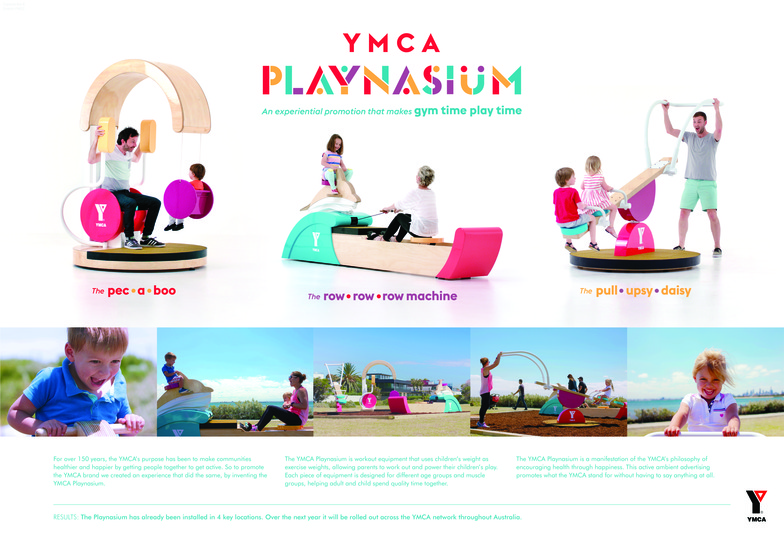
We also asked judge Subhash about the evaluation criteria.
Subhash:I thought, "What a wonderful promotion!"
Happiness and fitness coexist.
Both are essential for our balanced lives, right?
It was an idea that resonated across cultures and felt good at first glance.
But can this be sustained?
Pat:We'll continue it next year. The YMCA itself really loved the idea.
They've expressed wanting to continue it. By installing these at gyms and parks, the YMCA can connect with young parents. There's even talk of expanding it beyond Australia.
It seems like this will keep expanding. I think the key to its sustainability is that it's an idea the client genuinely wants to pursue.
Answer03: Thai Health
The third interview in our sustainable campaign series is about "Absorbplate," which won Silver in the Promo category and Gold in the Direct category.
The Thai Health Promotion Foundation conducts health awareness campaigns and research, with fostering public health consciousness as one of its missions.
Pitha Udomkanjananan of BBDO Bangkok focused on Thailand's greasy cuisine and created a plate with small indentations on the surface that drain oil from food.
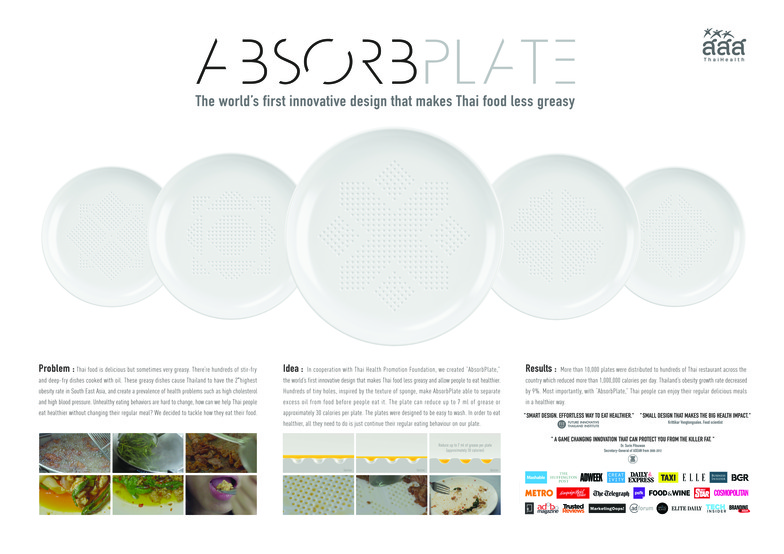
It's a great idea, but it won't mean anything unless it spreads.
I asked how many were made.
Pitha:We ended up making 10,000! At first, we distributed them as promotions to shops and such, but we got so many inquiries from people wanting them that we made more.
We've now secured a manufacturing company, and we've even had inquiries from Europe wanting to buy the rights.
If it means users can avoid using even a little oil, that's a win for them, right?
The secret to its enduring success seems to be that it's a product that fits into daily life, regardless of the country.
I asked judge Jerker about the key points of his evaluation.
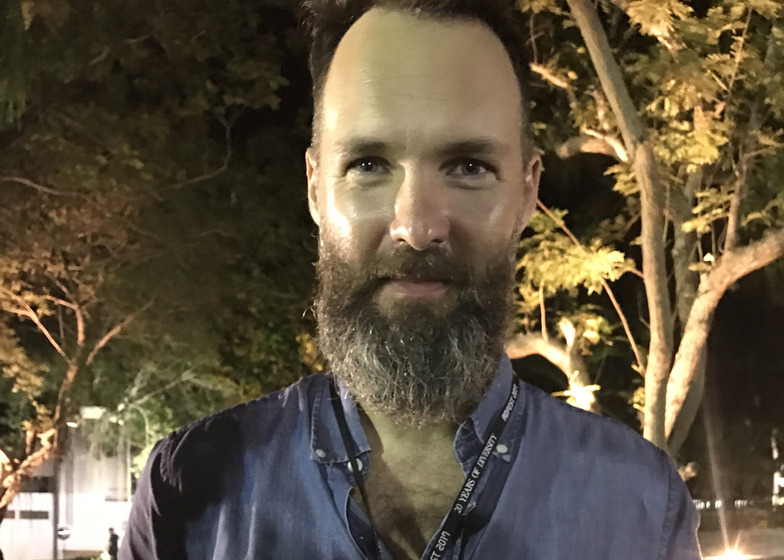
Jerker:It solves a very big problem with a simple solution.
It's a meaningful product for many people's lives.
When tackling big problems, we tend to tense up, thinking we need to do something equally big. But this gap was surprising.
By the way, what about the budget and schedule? I asked the planner.
Pitha:We launched in five months. The budget was small. Compared to Japan, well, you know!
It's just a plate, so it didn't cost much to make a lot of them.
Pitha, a peer who created such a wonderful product on a low budget and in a short time.
Seeing that made me feel encouraged—that with the right idea, I too could create products that improve daily life.
So far, we've introduced three case studies and interviews. In the latter half, we asked the Legend Team and the judging panel to answer questions that get a bit closer to the essence of the matter.
Question: "I feel like advertising campaigns change too often. How do you think we can create sustainable campaigns?"
Answer: Legend Team's Answer
At ADFEST, the Legend Lotus is selected annually to honor past achievements. This year's Legend is Suthisak from BBDO Bangkok.
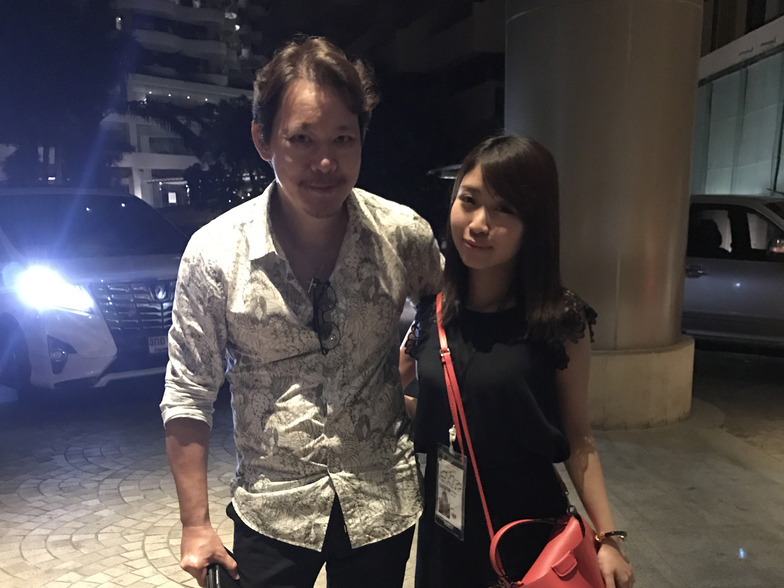
His answer was,
Suthisak:The secret to good ideas is teamwork.
And we choose things that surprise, things you've never seen before, things that speak to your heart. To keep going, you have to keep the passion alive!
To learn more about this "teamwork," we asked Larp (center in photo), one of the Legend Team members, to elaborate on their daily planning process.

Larp:Since we only have 30 creatives, we meet monthly to share feedback on each other's current projects. Sometimes one team will choose another team's idea.
We leverage everyone's minds to refine ideas. Suthisak (this year's Legend) is always there, magically transforming fragments of ideas into brilliant concepts.
I see. So you're leveraging the planning power of an outsider to make projects simpler and stronger.
And among the answers I heard this time, the most grounded (in my view) came from Win, a copywriter of the same generation who was part of this Legend team. He's 25, but he graduated university at 21 and BBDO Bangkok is his third agency.
Win: The way to create sustainable campaigns is to craft a "strong tagline that perfectly aligns with the client's identity," like Coca-Cola's "Share a Coke."
Then you can create any campaign using the same approach.
I think that's the key to producing strong, sustainable campaigns.
If the guiding principle for the team, including the client, is defined in a single phrase, both the brand and the campaign will endure.
Answer: Judges & Jury President's Response
Finally, we asked Jerker, a judge in the Direct & Promo category, and Ted Royer, the Head Judge, "How can we create sustainable campaigns?"
Jerker:Just hand the idea over completely to the client. The idea of what the client wants to do, wants to continue, wants to create. Like a business idea.
But it can't just be a product; it must coexist with branding.
Because no matter how good a feature you come up with, good things get copied quickly.
Even cheap copied sandals probably function almost the same as the real thing.
That's why branding matters. Even with nearly identical functionality, we buy the real, expensive sandals, right?
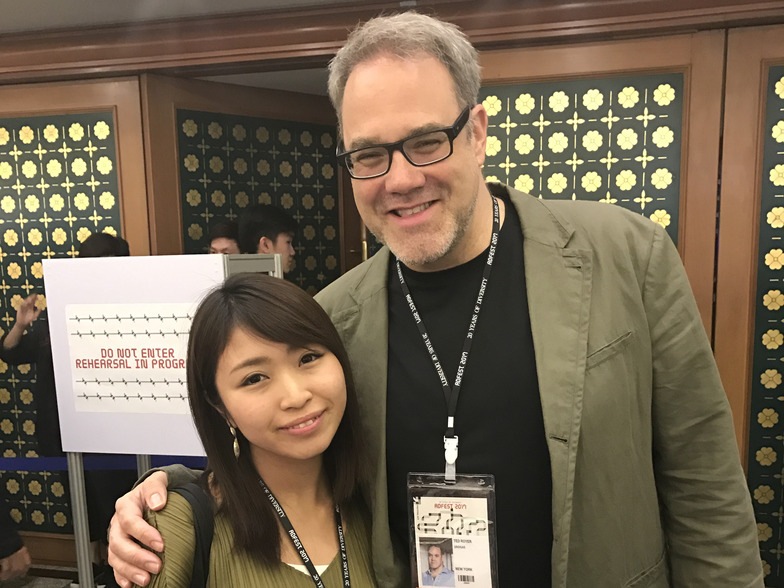
Ted:Campaigns changing so quickly is a big problem in this industry.
But keep your passion alive and stay true to your creativity.
We have people among us who can pull it off.
Ted, thank you for asking such a great question. You listened earnestly to a stranger like me and gave me courage. I learned an important mindset for professionals in creation.
I am grateful to the many people whose kindness made this report possible. I hope to contribute, however modestly, to creating sustainable campaigns and solving social issues through the power of design and ideas.
Was this article helpful?
Newsletter registration is here
We select and publish important news every day
For inquiries about this article
Author

Kyoko Kita
Dentsu Inc.
First CR Planning Bureau
Copywriter / Communication Designer
Graduated from Kyushu University's Faculty of Design and Art. Joined Dentsu Inc. in 2015. Specializes in creative planning centered around copywriting, integrating PR and product elements, such as ZONe ENERGY's "Ads Only Visible to Exam Candidates" and NETFLIX's LGBTQ campaign "Toward an Era Where We Can Say the Obvious, Obviously." Awards include ADFEST Lotus Roots, TCC Newcomer Award, Good Design Award Best 100, ONE SHOW Design Category, Cannes Lions Design Category, ACC Under29, and Art Director Training Course Grand Prix. Served as Copywriting Instructor for Dentsu Inc. Interns and Copywriting Course Lecturer at Kyushu University.
